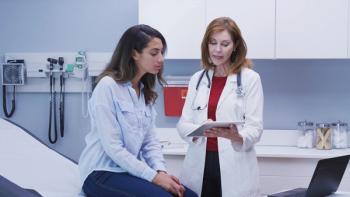
Genetic Testing and Inherited Increased Risk of Cancer
People with genetic mutations are often confronted with an abundance of screening protocols that can be overwhelming.
By: Charlotte Ference, LMSW
The American Cancer Society estimates that 5%-10% of cancers are connected with mutations in the DNA that are inherited through generations.1 For millions of patients in the United States, genetic testing allows for a deeper understanding of one’s risks, prompting more comprehensive screening and services in an effort to prevent the onset of a disease or detect cancer at an earlier stage. Despite heightened awareness of the BRCA gene, breast cancer is far from the only cancer associated with inherited risks. Melanoma, pancreatic, prostate, colon, ovarian, stomach, and brain cancers may be associated with family cancer syndromes caused by inherited genetic mutations.2
Most insurance companies that pay for genetic testing do so at the request of a primary care physician or genetic counselor who has agreed that there are enough immediate family relatives with cancer diagnoses to warrant a genetic test on the patient. Patients often have to recite a painful list of family members who have had cancer diagnoses, and this in itself is unsettling, given that they may have lost family members from the disease and may still be grieving. The emotional context of a family medical history is compounded by the implication that patients themselves may be diagnosed with cancer in the future.
Screening
For people with genetic mutations that lead to an increased risk of cancer, occupying the same clinical spaces designed for people with cancer diagnoses may be challenging. The protocol for many genetic mutations involves annual or biannual scans or follow up on concerns.3 As a result, patients can form lasting relationships with oncology nurses without ever having a diagnosis of cancer. The discovery of a genetic mutation allows people to take power over an uncertain future, but places them in the same medical setting they are hoping to avoid. For those living in more rural areas, access to genetic counseling may be limited. Patients will look to oncology nurses for assurance that their screenings or preventive measures will be effective, and may feel discomfort at being treated as though they are already a person with cancer.
Caregivers as Patients
Because most patients with genetic mutations will have family members who have been diagnosed with cancer, it can be a fine line between patient and caregiver. When working with clients who compare their diagnoses and experience with cancer to those of similarly diagnosed family members, it is important to remember the individuality of patient experience. Working with caregivers can present unique topics, as their concerns are both for the patient and for their own futures. It is important as oncology nurses to remember that patients identified with family cancer syndromes usually have a lengthy personal narrative that includes multiple losses of family members. This creates the need for a delicate balance in which oncology nurses have to be aware of their patients’ need for support while not assuming that the patient will become ill themselves.
Context of Increased Risk
People with genetic mutations are often confronted with an abundance of screening protocols that can be overwhelming. Oncology nurses have the rare chance to form long-term relationships with patients and help contextualize the data behind what “increased risk” means. Various cancer syndromes can have different timelines; one may involve an increase in cancer diagnoses for those under the age of 30 while another might involve a lifetime of gradually increasing risk. Oncology nurses can help put these things into context. For example, oncology nurses can help patients understand that a high risk of cancer by the age of 70 only remains true if nothing is done to lessen risks associated with cancer2 and that increased screening, changes in diet, reduction in alcohol and avoidance of tobacco can prevent or reduce chances of cancer.1
Meet the Patient Where They Are
Oncology nurses are at the front lines of meeting a patient where they are emotionally. If a patient comes to an oncology center for screenings, oncology nurses can treat them with care and empathy while being mindful that the patient might not need the same degree of support as someone with a cancer diagnosis. In the same vein, a patient with a family cancer syndrome may experience increased anxiety due to previous scans and tests and require more information and reassurance.
If Cancer Is Found
It is essential to remember that people with family cancer syndromes may never receive a cancer diagnosis. This may be due to preventive surgeries to remove organs and body tissue or prophylactic medication.3 For those patients who are unable to take preventive surgeries and rely on increased screening measures, there may eventually be a cancer diagnosis. The emotional comparison to other family members challenges the notion that everyone’s experience with cancer is unique, and oncology nurses can help contextualize and support a patient who transitions from screenings to cancer care. Oncology nurses are often in a prime position to validate the patient experience and provide essential support in long-term relationships with patients and caregivers.
- The American Cancer Society. Family Cancer Syndromes. https://amp.cancer.org/cancer/cancer-causes/genetics/family-cancer-syndromes.html January 4, 2018. Accessed December 10, 2019
- Schmeler KN, Lynch HT, Chen L, et. al. Prophylactic Surgery to Reduce the Risk of Gynecologic Cancers in the Lynch Syndrome. New England Journal of Medicine. Jan. 9, 2006. DOI: 10.1056/NEJMoa052627
- Garber JE, Offit K. Hereditary Cancer Predisposition Syndromes. Journal of Clinical Oncology. 2005. https://doi.org/10.1200/JCO.2005.10.042
Newsletter
Knowledge is power. Don’t miss the most recent breakthroughs in cancer care.




















































































